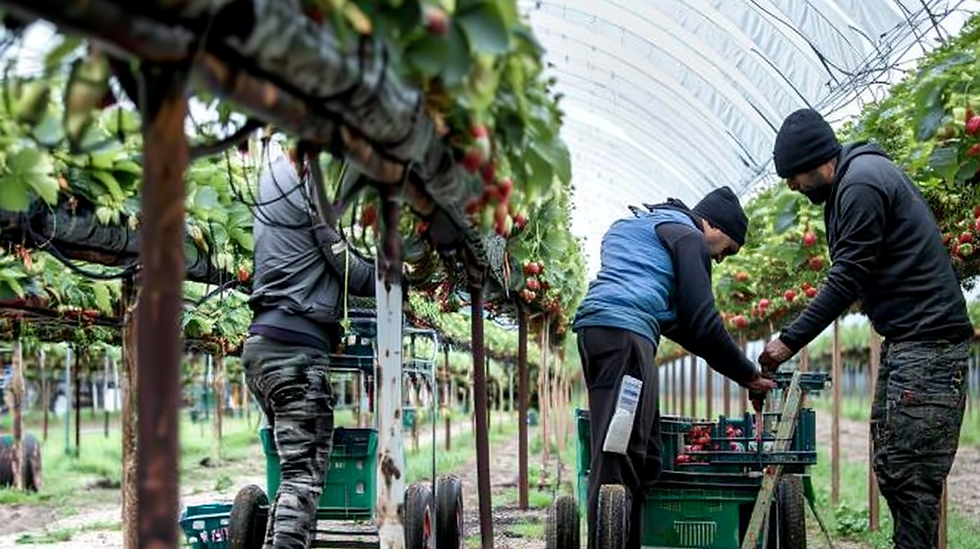Labour Cuts Raise Fresh Produce Supply Concerns For 2026
- Sarah-Jayne Gratton

- 1 day ago
- 2 min read
UK horticulture will face a tighter labour market in 2026 after DEFRA confirmed a reduction of 2,000 visas under the Seasonal Worker Scheme for the horticulture sector.

The department has set the allocation at 41,000 visas for horticulture workers in 2026, down from 43,000 in 2025.
The cut has prompted concern among growers and industry bodies, who warn that labour pressures will intensify ahead of key harvesting windows for fruit, vegetables and ornamental plants.
Labour shortage risk underlines growing pressure
With fewer visas available, growers fear this change may exacerbate existing labour constraints. Many horticulture businesses rely heavily on seasonal migrant labour for crops such as strawberries, asparagus, soft fruit and flowers.
Industry representatives say the reduction places additional strain on an already challenging operating environment characterised by rising labour costs, supply chain disruption and increasingly unpredictable weather.
Why the reduction?
While DEFRA has not published detailed reasoning for the decrease, the figure appears to reflect the government’s current approach to managing seasonal migration quotas and balancing labour supply with wider immigration policy.
It also follows previous allocations, with the scheme having offered 43,000 horticulture visas for 2025. Although the poultry strand of the scheme remains separate, the horticulture component dominates labour planning for seasonal crops, and the new 2026 figure now shapes growers’ forward-looking labour strategies.
Growers call for flexibility and certainty
Industry groups have urged the government to provide greater flexibility within the scheme and earlier clarity for the season ahead. A key request is for the scheme to allow quicker re-entry of workers between seasons to smooth transitions and maximise labour availability.
For sectors such as fresh produce, where timing is critical, the cut may translate into tighter labour margins, possible delays and increased reliance on mechanisation or domestic recruitment.
For wholesalers, suppliers and retailers, the 2026 irrigation, planting and harvesting schedules may need revisiting, particularly for labour-intensive crops. The reduction serves as a reminder that labour remains a critical vulnerability in the fresh produce supply chain, and contingency planning will be essential.
Looking ahead
Growers will now watch closely for whether the scheme’s rules, including re-entry and duration of stay, are adjusted to mitigate the cut. They will also be looking for any additional policy support to smooth labour flows, from housing provision to visa facilitation.
As the 2026 season approaches, forward-thinking businesses are expected to review labour contracts, consider alternative sourcing and continue investing in mechanisation to bolster resilience.






Comments